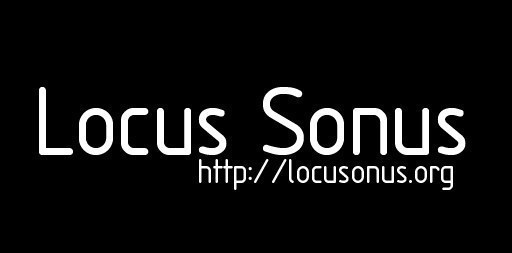

locus sonus > Proj FitzgeraldLast changed: 2012/03/08 00:31
|
||
|---|---|---|
|
Projets (2008-2010)
Scott Fitzgeraldcette page est en cours de rédaction / This page is under construction / página en construcciónRealisation : Sonic CartographyProject was inspired by the workshop we did at Luminy, using GPS as a means of triggering sound events on a sound walk. Combining this with my interest in filed recordingns and mapping, I started to formulate a notion of mapping urban environments with sound. Embodiment in the sense that we are imposibg our person into space. Tagging the world because it's suggested we are clueless and unable to survive (make us more aware of our surroundings). pachube was an early inspiation an opensource data sharing TheoryDIY environmental monitoring :: a post-cinematic experience, extends to scale beyond our immediate perceptual state reinforce the attention given to sound in the urban space, via different modes of transportation tease out different aspects of the feed that we may typically tune out markup as a means of incorporating a number of different practices :: social production as annotating the city ExecutionThe primary goal was to pair up GPS information, which records location, altitude, and velocity, with an audio recording, synching up the time stamps so that a pairing could be reached. First effortsThe first iteration was a hardware based implementation, paring an H2 zoom sound recorder with an Arduino+GPS which wrote the location to a SD card. this GPS information was parsed online to provide a representational map. As this is supposed to be a frameworks for people to track sound in space at specific points in time, any number of outcomes is possible with the paired data. As an example, I used the information to spatialized a number of recordings in a different space, using the gps data as a means to drive the sound around the space. This was achieved with a Max patch using the Ambisonics externals from the ICST I made these tests at the University of Newcastle's Culture Lab as a visiting professor with the support of the staff and faculty there. Current statusAs this is a mapping utility, it was always hoped that this platform would be available on mobile devices. As such, I've been working on an Android and iPhone version of the application. Mobile developer Shawn Van Evry has been helping me with these implementation, particularly the Android versions. This has led me to a number of different avenues of new research,including working with a team of develpers porting Pure Data to the Android platform, Processing for Android, and working with new cross platform mobile device development tools, like titanium developer. URL :http://www.soniccartography.com/ DevelopmentThe work I propose to complete in France is the first stage of a larger art and research project. The project itself involves new means of interpreting space through aggregated sensor information. There are three parts to this project :
While in France I will build out the hardware prototype, with a GPS module attached to a microcontroller and SD card for data logging. Audio recording will happen with a different device. The audio recorder must have a time stamp that matches the GPS data. Once I have verified the syncing of the data between the two devices, I will take some sample recordings, and make the data publicly available. I will also make available the code and circuit schematics from the hardware prototype. The second part of the research will take place over the summer of 2009, with various interpretations manifesting themselves as more information is collected. the software will be distributed to beta testers, and the code will be made available.
|
||
|
Lab 2013/2014: Elena Biserna, Stéphane Cousot, Laurent Di Biase, Grégoire Lauvin, Fabrice Métais, Marie Müller, (Julien Clauss, Alejandro Duque), Jérôme Joy, Anne Roquigny, Peter Sinclair. 2008/2014 — Powered by LionWiki 2.2.2 — Thanks to Adam Zivner © images Locus Sonus webmaster & webdesign : Jérôme Joy contact: info (at) locusonus.org 2004-2014 Locus Sonus |
||
Article:
Admin functions:
Other:
Search:
Language:
Info:
Powered by LionWiki 2.2.2
Tested on FireFox2, FireFox3, Safari2, Safari3